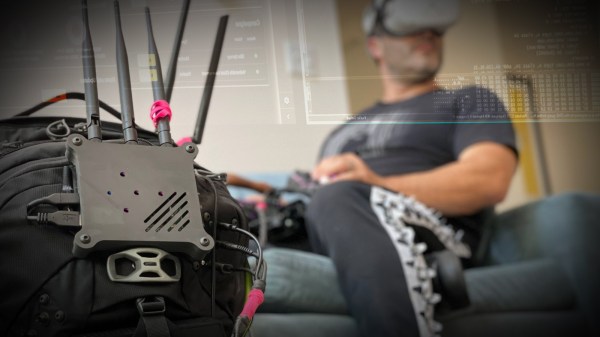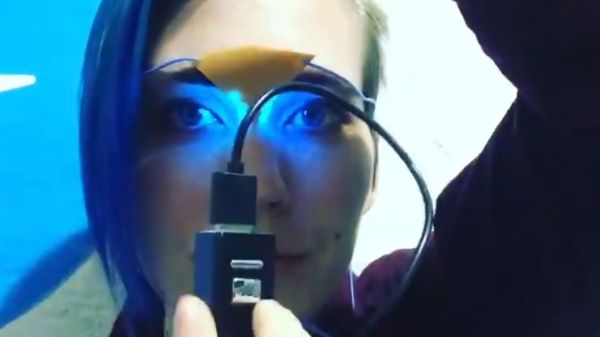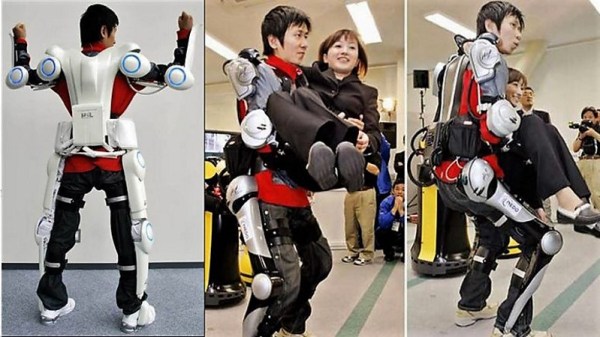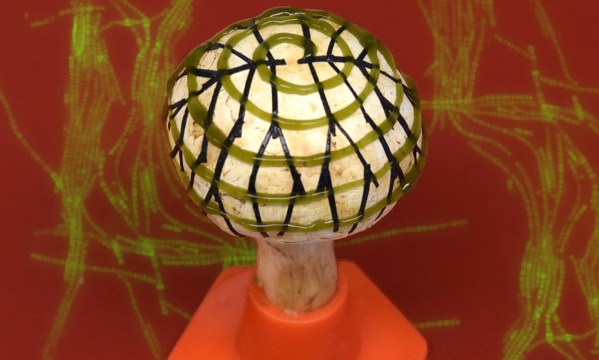So, maybe right now isn’t the best time to get into the high-altitude ballooning hobby? At least in the US, which with the downing of another — whatever? — over Alaska, seems to have taken a “Sidewinders first, threat identification later” approach to anything that floats by. The latest incident involved an aircraft of unknown type, described as “the size of a small car” — there’s that units problem again — that was operating over Prudhoe Bay off the northern coast of Alaska. The reason that was given for this one earning a Sidewinder was that it was operating much lower than the balloon from last week, only about 40,000 feet, which is well within the ceiling of commercial aviation. It was also over sea ice at the time of the shootdown, making the chance of bothering anyone besides a polar bear unlikely. We’re not taking any political position on this whole thing, but there certainly are engineering and technical aspects of these shootdowns that are pretty interesting, as well as the aforementioned potential for liability if your HAB goes astray. Nobody ever really benefits from having an international incident on their resume, after all.
cyborg24 Articles
2022 Cyberdeck Contest: Cyberpack VR
Feeling confined by the “traditional” cyberdeck form factor, [adam] decided to build something a little bigger with his Cyberpack VR. If you’ve ever dreamed of being a WiFi-equipped porcupine, then this is the cyberdeck you’ve been waiting for.
Craving the upgradability and utility of a desktop in a more portable format, [adam] took an old commuter backpack and squeezed in a Windows 11 PC, Raspberry Pi, multiple wifi networks, an ergonomic keyboard, a Quest VR headset, and enough antennas to attract the attention of the FCC. The abundance of network hardware is due to [adam]’s “new interest: a deeper understanding of wifi, and control of my own home network even if my teenage kids become hackers.”
The Quest is setup to run multiple virtual displays via Immersed, and you can relax on the couch while leaving the bag on the floor nearby with the extra long umbilical. One of the neat details of this build is repurposing the bag’s external helmet mount to attach the terminal unit when not in use. Other details we love are the toggle switches and really integrated look of the antenna connectors and USB ports. The way these elements are integrated into the bag makes it feel borderline organic – all the better for your cyborg chic.
For more WiFi backpacking goodness you may be interested in the Pwnton Pack. We’ve also covered other non-traditional cyberdecks including the Steampunk Cyberdeck and the Galdeano. If you have your own cyberdeck, you have until September 30th to submit it to our 2022 Cyberdeck Contest!
Got Me Feeling Blue
Sleep schedules are an early casualty in the fight to be productive. Getting good sleep is an uphill battle, so anything that can help us is a welcome ally. We all know about the phone and computer settings that turn down the infamous blue hues at sunset, but what about when you want more blue light? Maybe you want to convince your body to stay awake to pre-acclimate for a trip across time zones. Perhaps you work or live in a place that doesn’t have windows. Menopause introduces sleep trouble, and that is a perilously steep hill.
[glowascii] takes the approach of keeping-it-simple when they arrange six blue LEDs under a flesh-tone patch, which isn’t fooling anyone and powers the lights with a USB power pack. Fremen jokes aside, light therapy is pricey compared to parts some of you have sitting in a drawer. Heck, we’d wager that a few of you started calculating the necessary resistor sizes before you read this sentence. Even if you don’t need something like this, maybe you can dedicate an afternoon to someone who does.
DIY therapy has a special place in our (currently organic) hearts, such as in this rehabilition glove or a robot arm.
Continue reading “Got Me Feeling Blue”
The Cyborgs Among Us: Exoskeletons Go Mainstream
Every technological advancement seems to have a sharp inflection point, a time before which it seems like any early adopters are considered kooks, but beyond which the device or service quickly becomes so mainstream that non-adopters become the kooky ones. Take cell phones, for example – I clearly remember a news report back in the 1990s about some manufacturers crazy idea to put a digital camera in a phone. Seemingly minutes later, you couldn’t buy a phone without a camera.
It seems like we may be nearing a similar inflection point with a technology far more complex and potentially far more life-altering than cameras in cell phones: powered exoskeletons. With increasing numbers of news stories covering advancements in exoskeletal assistants for the elderly, therapeutic applications for those suffering from spinal cord injuries and neurodegenerative diseases, and penetration into the workplace – including the battlefield – as amplifiers of human effort, it’s worth taking a look at where we are with exoskeletons before seeing someone using one in public becomes so commonplace as to go unnoticed.
Continue reading “The Cyborgs Among Us: Exoskeletons Go Mainstream”
Human Augmentation For Weight Loss
If you read almost any article about powered human implants, you will encounter the same roadblock, “it could be so much better with more powerful batteries.” Our fleshy power systems are different from electrical systems, but we are full of moving parts, so [Xudong Wang] and fellow researchers have harnessed that power (Sci Hub Alt) and turned it right back into something else our body understands.
The goal of this project is to control obesity by tricking the vagus nerve into thinking we are full as we digest our current meal. The treatment has already been proven with battery-powered implants, but this version uses the oscillations of the stomach for power and sends the generated power right where it is needed. A control group of rats showed no change over 100 days, but those with this implant shed more than a third of their body weight. This may need some tuning but its effectiveness seems to be heading the right way, and it is surgically reversible.
The device is a triboelectric generator coated in polyimide and Ecoflex™ with gold electrodes that wrap around the vagus nerve at the gastro-esophageal junction. The generator presses against the stomach from outside and the rhythm of the muscles generates the signal that the stomach is full so it becomes a loop of digesting ⇄ sated.
Another handful, of implants don’t need power from inside the body and use RFID technology.
Via IEEE Spectrum.
Cyborg, Or Leafy Sensor Array?
Some plants react quickly enough for our senses to notice, such as a Venus flytrap or mimosa pudica. Most of the time, we need time-lapse photography at a minimum to notice while more exotic sensors can measure things like microscopic pores opening and closing. As with any sensor reading, those measurements can be turned into action through a little trick we call automation. [Harpreet Sareen] and [Pattie Maes] at MIT brought these two ideas together in a way which we haven’t seen before where a plant has taken the driver’s seat in a project called Elowan. Details are sparse but the concept is easy enough to grasp.
We are not sure if this qualifies as a full-fledged cyborg or if this is a case of a robot using biological sensors. Maybe it all depends on which angle you present this mixture of plant and machine. Perhaps it is truly is the symbiotic relationship that the project claims it to be. The robot would not receive any instructions without the plant and the plant would receive sub-optimal light without the robot. What other ways could plants be integrated into robotics to make it a bona fide cyborg?
Cyborg Mushrooms
Of all the fictional cyborgs who turn against humanity to conquer the planet, this is as far from that possibility as you can get. These harmless mushrooms seem more interested in showing off their excellent fashion sense with a daring juxtaposition of hard grid lines with playful spirals. But the purpose of this bacteria-fungus-technology hybrid is to generate electricity. The mushrooms are there to play nurse to a layer of cyanobacteria, the green gel in the photo, while the straight black lines harvest electricity.
Cyanobacteria do not live very long under these kinds of conditions, so long-term use is out of the question, but by giving the cyanobacteria somewhere it can thrive, the usefulness grows. The interplay between bacterial and supportive organics could lead to advances in sensors and hydrogels as well. At some point, we may grow some of our hardware and a green thumb will be as useful as a degree in computer science.
Hydrogels could be the next medical revolution, and we’ve already made hydrogels into tattoos, used them as forms for artificial muscles, and hydrogels can be a part of soft tissue printing.



















